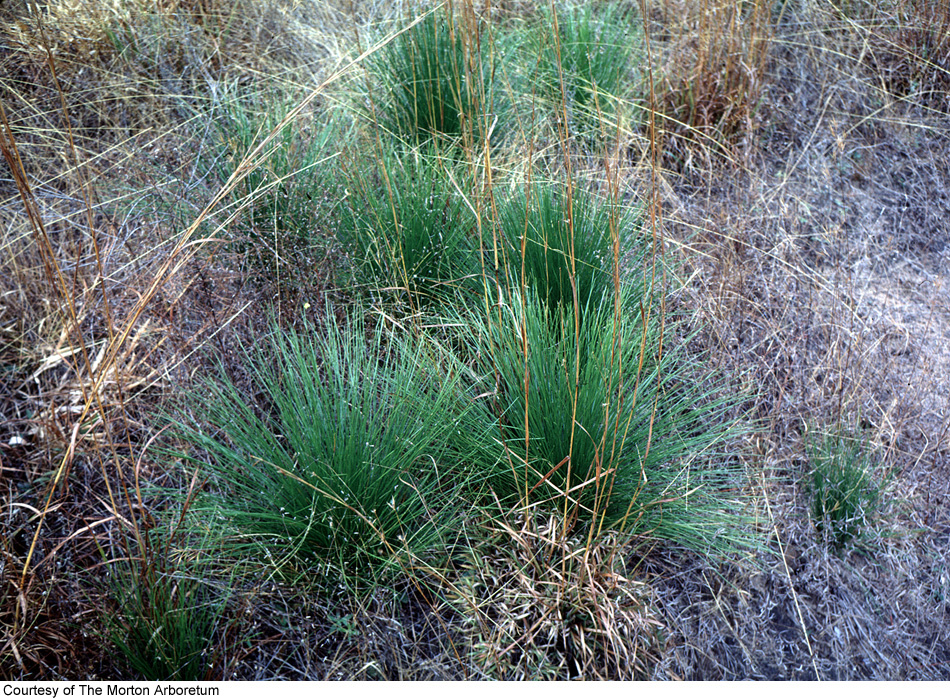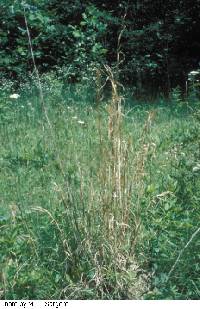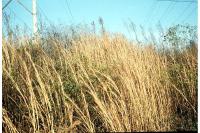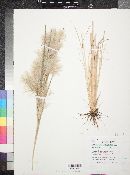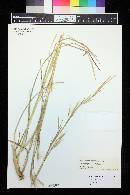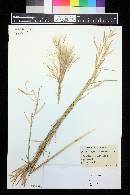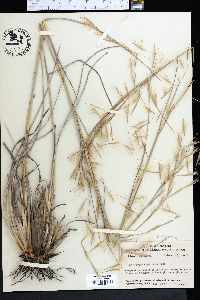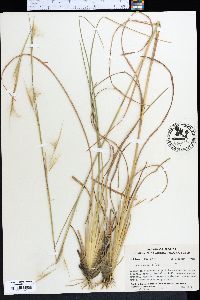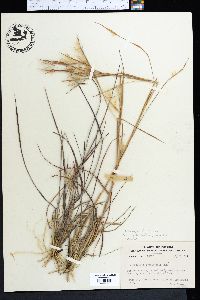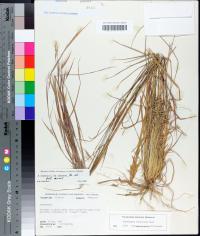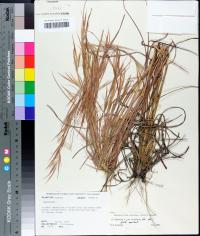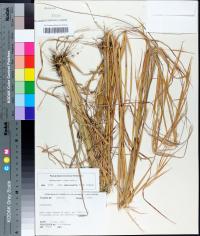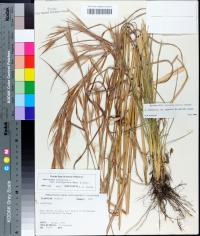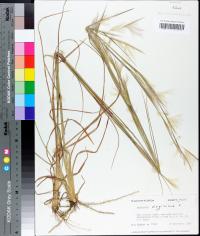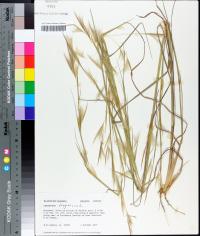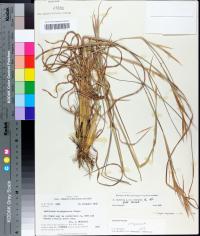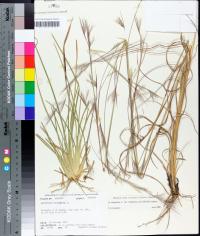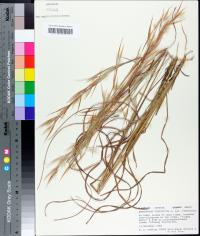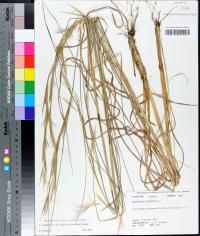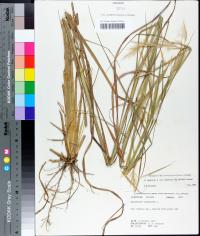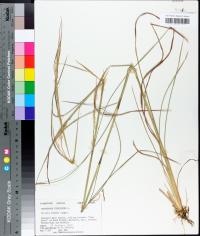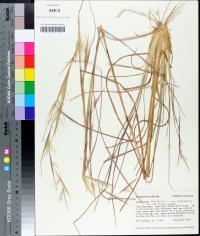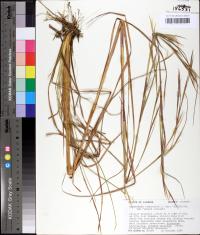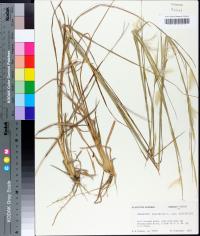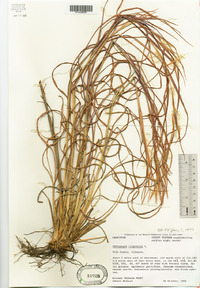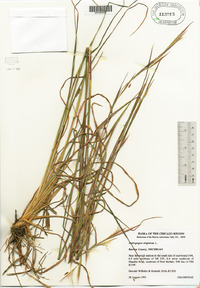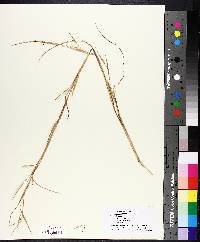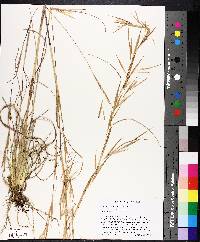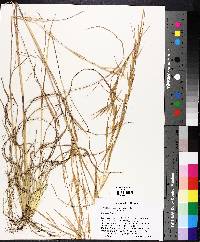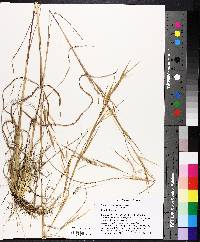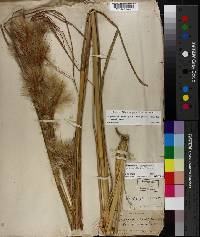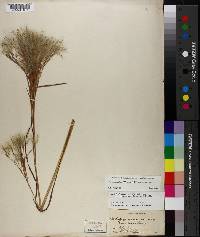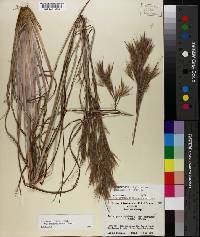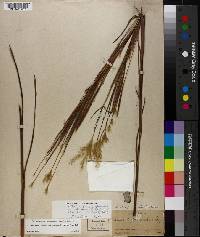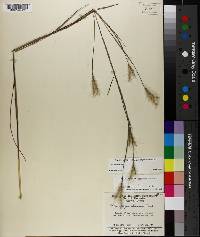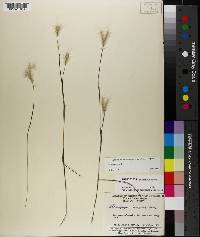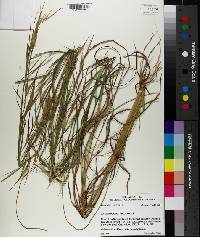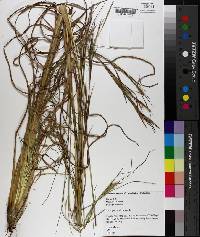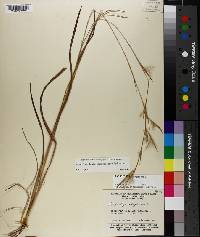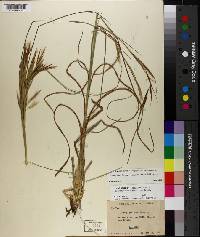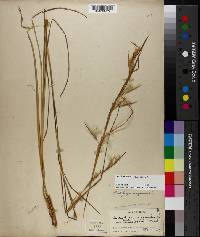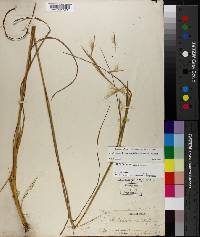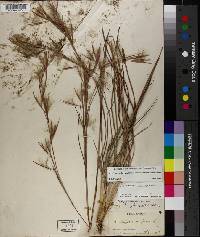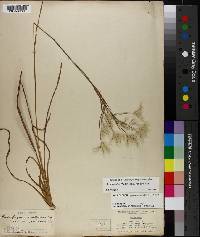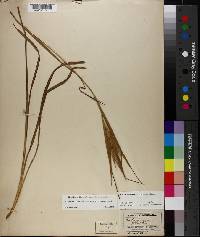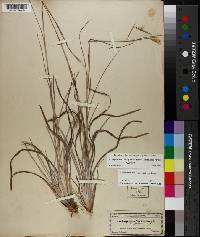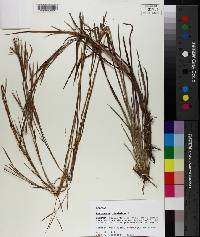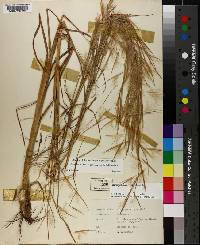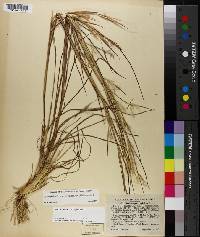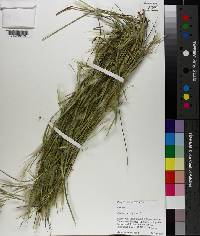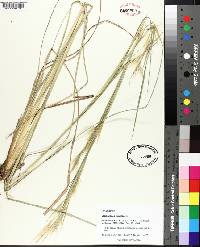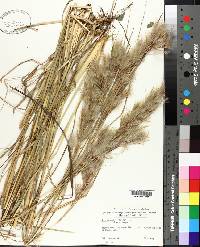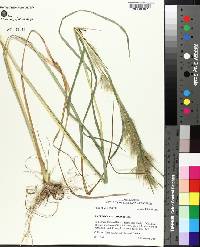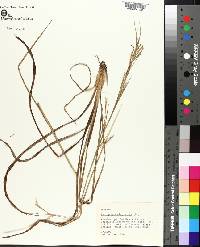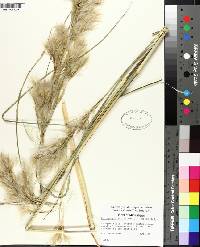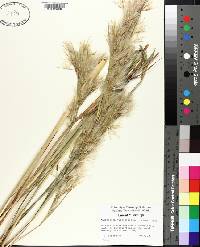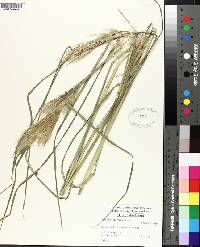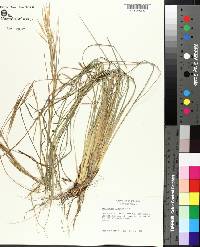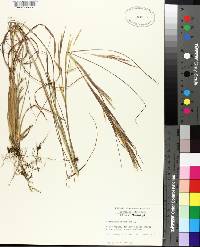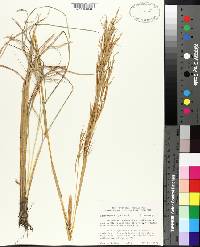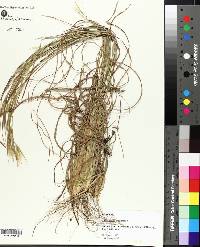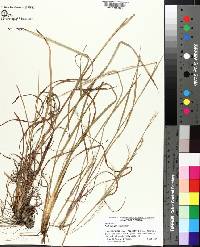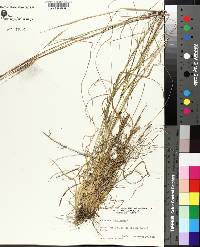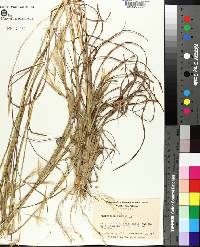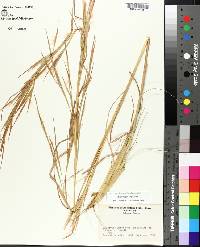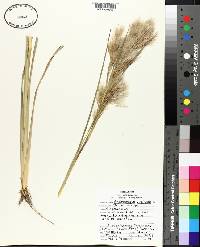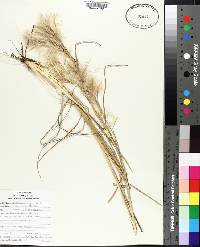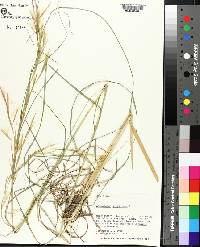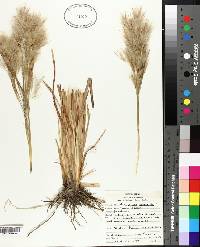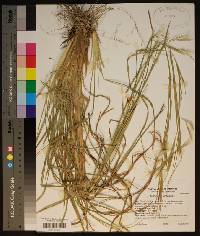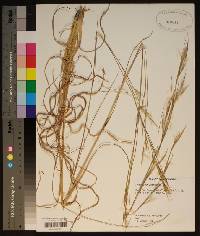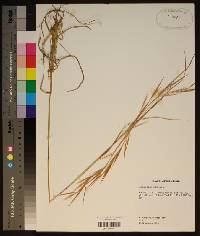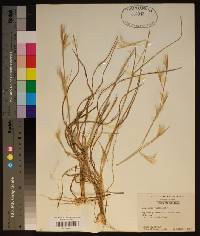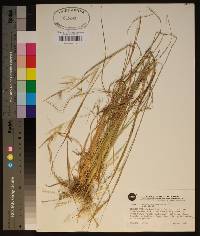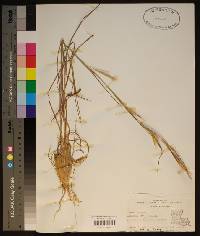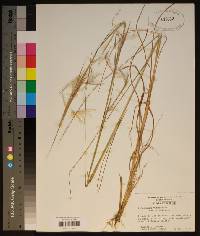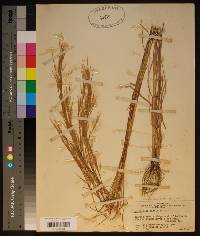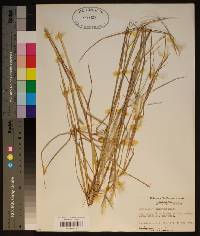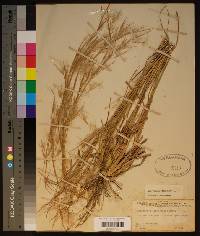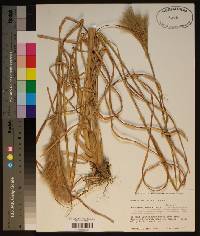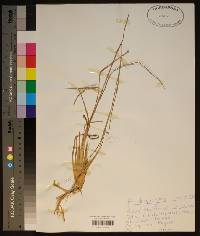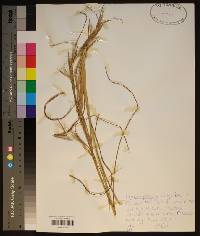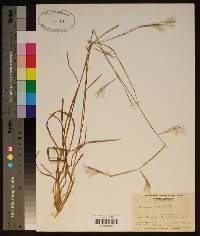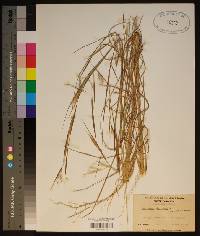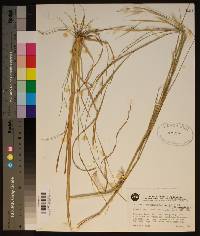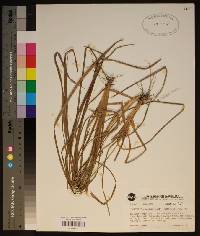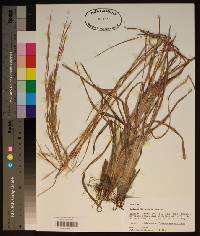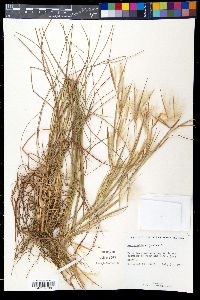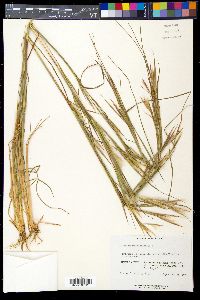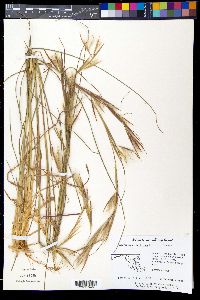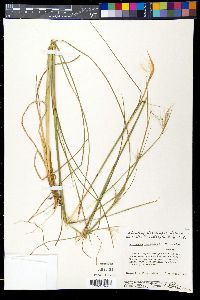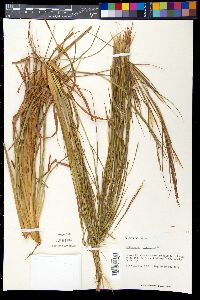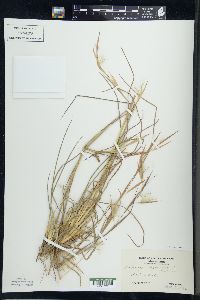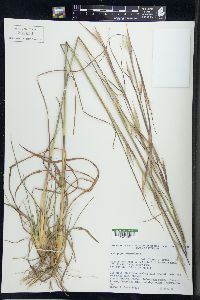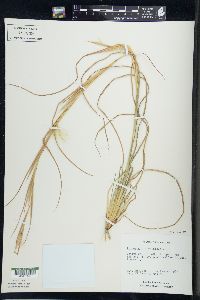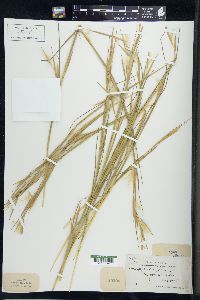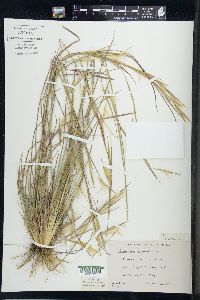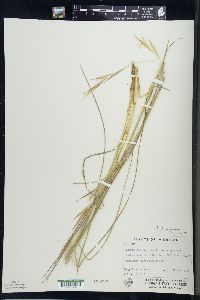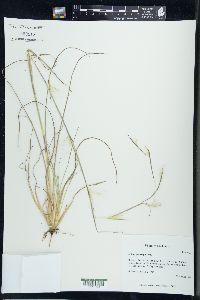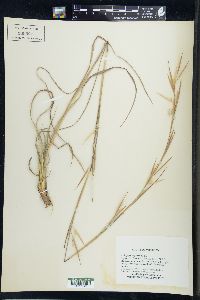
|
|
|
|
Family: Poaceae
Broom-Sedge, more...Chalky Bluestem, Broomsedge Bluestem
[Anatherum virginicum var. tetrastachyum (Ell.) Roberty, moreAndropogon curtisianus Steud., Andropogon dealbatus (C.Mohr ex Hack.) Weakley & LeBlond, Andropogon dissitiflorum Michx., Andropogon dissitiflorus Michx., Andropogon eriophorus Scheele, Andropogon glaucus , Andropogon louisianae Steud., Andropogon macrourus var. viridis , Andropogon tetrastachyus , Andropogon virginicus f. virginicus L., Andropogon virginicus subsp. genuinus Hack., Andropogon virginicus subvar. ditior Hack., Andropogon virginicus var. genuinus Fernald & Griscom, Andropogon virginicus var. scabriglumus C. Campbell, Andropogon virginicus var. vaginatus (Elliott) Alph. Wood, Andropogon virginicus var. viridis Hack., Cinna lateralis Walter, Holcus virginicus Muhl. ex Steud., Sorghum virginicum (L.) Kuntze] |
Plants cespitose, dense and cylindrical to obpyramidal above. Culms 40-210 cm; internodes glaucous or not; branches erect to ascending, usually straight, sometimes arching. Sheaths usually smooth, rarely somewhat scabrous; ligules 0.2-1 mm, ciliate, cilia 0.2-1.3 mm; blades 11-52 cm long, 1.7-6.5 mm wide, smooth and glabrous or sparsely to densely pubescent with spreading hairs. Inflorescence units 6-195 per culm; subtending sheaths (2.1)3.1-4.6(6.7) cm long, (1.7)3-3.8(5.6) mm wide; peduncles usually (1)4-6(30) mm, with 2-7 rames; rames (0.5)1.7-2.8(4.4) cm, sometimes exserted at maturity, pubescence sparse basally and increasing in density distally within each internode. Sessile spikelets (2.6)3.5-3.8(4.7) mm; callus hairs 1-3 mm; keels of lower glume usually smooth below midlength, scabrous distally; awns 6-21 mm; anthers 1(3), 0.6-1.5 mm, yellow or purple. Pedicellate spikelets vestigial to absent. 2n = 20. Andropogon virginicus is native from the southeastern United States to northern South America, but has become established outside its native range in California, Hawaii, Japan, and Australia. Three varieties are recognized, two of which contain morphologically distinct variants. Andropogon virginicus hybridizes with A. glomeratus and A. longiberbis (Campbell 1986). Perennial densely tufted herb 40 cm - 2.15 m tall Leaves: with often smooth sheaths and ligules that are 0.2 - 1 mm long, membranous, and lined with hairs (0.2 - 1.3 mm long) along the margins. The blades are linear, 11 cm - 0.52 m long, 1.7 - 6.5 mm wide, hairless or with spreading hairs. Inflorescence: terminal and axillary, with numerous clusters per culm and two to seven spikes per cluster. The hairy spikes are 0.5 - 4.4 cm long and the base is sometimes surrounded by the subtending sheath. Fruit: a caryopsis. Culm: erect, highly branched above, 40 cm - 2.1 m tall, the internodes sometimes covered with a whitish waxy coating (glaucous). Spikelets: either stalkless or stalked. The stalkless spikelets are bisexual and 2.6 - 4.7 mm long, and the stalked spikelets are absent or rudimentary. Florets: of the stalkless spikelets have a lemma with an awn 6 - 21 mm long and one (rarely three) yellow or purple anther 0.6 - 1.5 mm long. Lower glume: membranous, with unwinged longitudinal ridges that are usually smooth below the middle and rough above. Similar species: Both Andropogon gerardii and A. hallii have inflorescences longer than 5 cm, well-developed stalked spikelets, and three anthers per floret. Flowering: August to October Habitat and ecology: Introduced from the southern United States, this species is a weed in old sandy fields. Occurence in the Chicago region: non-native Etymology: Andropogon comes from the Greek words aner, meaning man, and pogon, meaning beard. Virginicus means "from Virginia." Author: The Morton Arboretum Culms tufted, 5-15 dm, branched above, mostly glabrous and often glaucous, the uppermost nodes sometimes sparsely villous; lvs often pilose on the sheath and ligule, the blade 3-8 mm wide; uppermost lvs spathe-like, enclosing the short (2-10 mm) peduncle and base of the few-many paired racemes, these 2-3 cm, with slender, flexuous, long-villous rachis; fertile spikelet 3-5 mm, shorter than the long-villous sterile pedicel, but longer than the internode just above it, the straight awn 1-2 cm; stamen mostly solitary; sterile spikelet none, or a delicate narrow glume to 2 mm; 2n=20. Our two principal vars. are very distinct northward, but pass freely into each other along the coastal plain from Md. southward through a series of intermediate forms often called var. glaucopsis (Elliott) Hitchc. Typical material differs as follows: Gleason, Henry A. & Cronquist, Arthur J. 1991. Manual of vascular plants of northeastern United States and adjacent Canada. lxxv + 910 pp. ©The New York Botanical Garden. All rights reserved. Used by permission. From Flora of Indiana (1940) by Charles C. Deam This species is restricted essentially to the southern half of the state where it is local to infrequent or common in slightly acid soil. It prefers moist soil but thrives also in dry situations. It is commonly found in old, worn out fields, hayfields, and pastures. ...... Indiana Coefficient of Conservatism: C = 1 Wetland Indicator Status: FACU Diagnostic Traits: To 2 m tall; spikes 2-5, not exserted from upper sheaths, silky villous; pedicellate spikelets vestigial; sessile spikelet 2.9-4.7 mm, its awn 6-21 mm. Our populations are assigned to var. virginicus. Deam (1929): At the Clark County State Forest the park of seven acres was planted on a worn-out field. It was thickly set with this speices and Schizachyrium scoparium, and repeated attempts to get it set to blue grass failed. At last a carload of agricultural lime was scattered over the area and the broom sedge promptly disappeared. |

